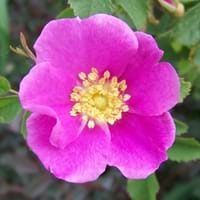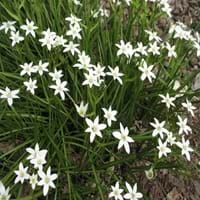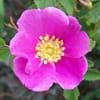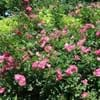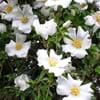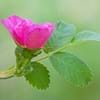Life Span
Perennial
Perennial
Type
Flowering Plants
Bulb or Corm or Tuber
Origin
Central America, Northern America
Eastern Europe, Southern Europe, Turkey
Types
Not Available
Not Available
Habitat
disturbed sites, Roadsides, stream banks, Woods
Cultivated Beds, meadows
USDA Hardiness Zone
Not Available
5-8
AHS Heat Zone
Not Available
8-1
Sunset Zone
Not Available
21,22
Habit
Upright/Erect
Clump-Forming
Flower Color
Baby Pink, Lavender, Pink, White
White, Light Green, Silver
Flower Color Modifier
Bicolor
Bicolor
Fruit Color
Non Fruiting Plant
Not Available
Leaf Color in Spring
Green, Gray Green, Dark Green
Green
Leaf Color in Summer
Green
Light Green
Leaf Color in Fall
Green, Gray Green, Dark Green
Several shades of Green
Leaf Color in Winter
Green, Dark Green
Light Green
Leaf Shape
Pinnate
Oblong-lanceolate
Plant Season
Spring, Summer
Spring
Sunlight
Partial shade, Partial Sun
Full Sun, Partial Sun, Partial shade
Type of Soil
Clay, Loam
Clay, Loam, Sand
The pH of Soil
Alkaline
Acidic, Neutral, Alkaline
Soil Drainage
Well drained
Well drained
Bloom Time
Spring, Summer
Early Spring, Spring
Tolerances
Wet Site
Drought
Where to Plant?
Container, Ground, Pot
Container, Ground, Pot
How to Plant?
Seedlings, Stem Planting
Seedlings
Plant Maintenance
Medium
Medium
Watering Requirements
Keep the ground moist but not water-logged
Average Water Needs
In Summer
Lots of watering
Lots of watering
In Spring
Moderate
Moderate
In Winter
Average Water
Average Water
Soil pH
Alkaline
Acidic, Neutral, Alkaline
Soil Type
Clay, Loam
Clay, Loam, Sand
Soil Drainage Capacity
Well drained
Well drained
Sun Exposure
Partial shade, Partial Sun
Full Sun, Partial Sun, Partial shade
Pruning
cut main flower spike, Remove dead branches, Remove dead or diseased plant parts
No pruning needed
Fertilizers
Apply 10-10-10 amount, as it is a flowering plant, use high phosphorous content fertilizer
Water soluble fertilizers
Pests and Diseases
Grasshoppers
No serious insect or disease problems
Plant Tolerance
Drought, Wet Site
Drought
Flower Petal Number
Single
Single
Foliage Texture
Medium
Medium
Foliage Sheen
Matte
Glossy
Attracts
Birds, Small mammals
Insects
Allergy
Constipation, Diarrhea, Headache, Heartburn, Nausea, Pain and fatigue, Stomach pain, Vomiting
Dermatitis, Poisonous to grazing animals
Aesthetic Uses
Bonsai, Bouquets, Cottage Garden, Showy Purposes
Beautification, Showy Purposes
Beauty Benefits
Good for skin, Skin Problems
Not Available
Environmental Uses
Air purification, Food for birds
Air purification
Medicinal Uses
Astringent, Diuretic, Laxative, Vitamin C
Certain forms of cancer, Homeopathy
Part of Plant Used
Flowers, Rose Hip
Root
Other Uses
Making Perfumes, Used as Ornamental plant, Used for its medicinal properties
Used As Food
Used As Indoor Plant
Yes
Yes
Used As Outdoor Plant
Yes
Yes
Garden Design
Feature Plant, Mixed Border
Alpine, Container, Mixed Border, Rock Garden / Wall
Botanical Name
Rosa woodsii
ORNITHOGALUM balansae
Common Name
Woods Rose, Interior Rose
Star-of-Bethlehem
In Hindi
Woods Rose
Star-of-Bethlehem
In German
Woods Rose
Stern -of- Bethlehem
In French
Woods Rose
Star- de - Bethléem
In Spanish
Woods Rose
Estrella de Belen
In Greek
Woods Rose
Star- of- Βηθλεέμ
In Portuguese
Woods Rose
Star of -Bethlehem
In Polish
Woods Rose
Star- of- Betlejem
In Latin
Woods Rose
Star of Bethlehem ,
Phylum
Magnoliophyta
Magnoliophyta
Class
Magnoliopsida
Lilopsida
Family
Rosaceae
Asparagaceae
Clade
Angiosperms, Eudicots, Rosids
Angiosperms, Monocots
Tribe
Not Available
Ornithogaleae
Subfamily
Not Available
Ornithogaloideae
Number of Species
Not Available
Properties of Woods Rose and Star-of-Bethlehem
Wondering what are the properties of Woods Rose and Star-of-Bethlehem? We provide you with everything About Woods Rose and Star-of-Bethlehem. Woods Rose has thorns and Star-of-Bethlehem doesn't have thorns. Also Woods Rose does not have fragrant flowers. Woods Rose has allergic reactions like Constipation, Diarrhea, Headache, Heartburn, Nausea, Pain and fatigue, Stomach pain and Vomiting and Star-of-Bethlehem has allergic reactions like Constipation, Diarrhea, Headache, Heartburn, Nausea, Pain and fatigue, Stomach pain and Vomiting. Compare all the properties and characteristics of these two plants. Find out which of these plant can be used as indoor plant. If you are interested to decorate your house and garden, find out aesthetic uses, compare them and select the plant which will beautify your surrounding. Along with beautification, try comparing medicinal and edible uses of Woods Rose and Star-of-Bethlehem and you can choose the plant having best and most benefits.
Season and Care of Woods Rose and Star-of-Bethlehem
Season and care of Woods Rose and Star-of-Bethlehem is important to know. While considering everything about Woods Rose and Star-of-Bethlehem Care, growing season is an essential factor. Woods Rose season is Spring and Summer and Star-of-Bethlehem season is Spring and Summer. The type of soil for Woods Rose is Clay, Loam and for Star-of-Bethlehem is Clay, Loam, Sand while the PH of soil for Woods Rose is Alkaline and for Star-of-Bethlehem is Acidic, Neutral, Alkaline.
Woods Rose and Star-of-Bethlehem Physical Information
Woods Rose and Star-of-Bethlehem physical information is very important for comparison. Woods Rose height is 300.00 cm and width 200.00 cm whereas Star-of-Bethlehem height is 10.20 cm and width 12.70 cm. The color specification of Woods Rose and Star-of-Bethlehem are as follows:
Woods Rose flower color: Baby Pink, Lavender, Pink and White
Woods Rose leaf color: Green, Gray Green and Dark Green
Star-of-Bethlehem flower color: White, Light Green and Silver
- Star-of-Bethlehem leaf color: Green
Care of Woods Rose and Star-of-Bethlehem
Care of Woods Rose and Star-of-Bethlehem include pruning, fertilizers, watering etc. Woods Rose pruning is done cut main flower spike, Remove dead branches and Remove dead or diseased plant parts and Star-of-Bethlehem pruning is done No pruning needed. In summer Woods Rose needs Lots of watering and in winter, it needs Average Water. Whereas, in summer Star-of-Bethlehem needs Lots of watering and in winter, it needs Average Water.
